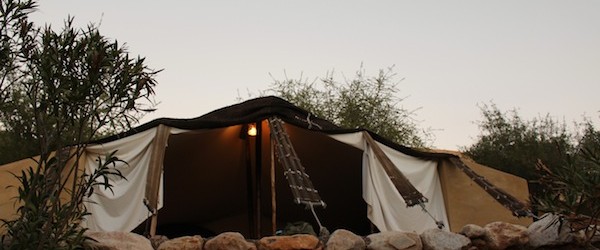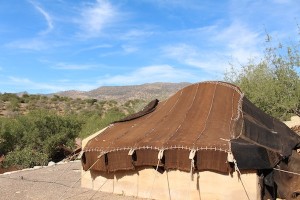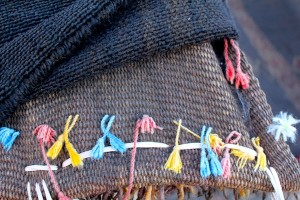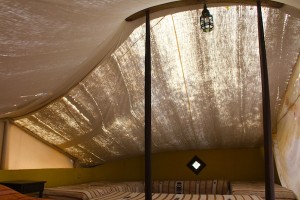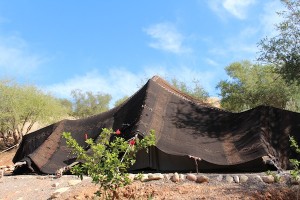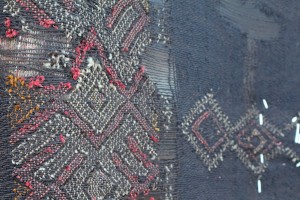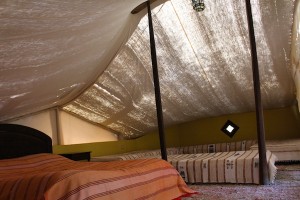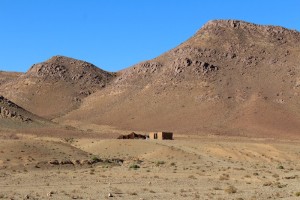What does it mean to be a nomad? We have lived for months with no home, so it seemed fitting to try a real nomad tent for a few days..
The Berber tent we stayed in, at the Paradis Nomade campsite north east of Agadir, has a low mud wall on three sides, over which is draped the inner and outer skins of the shelter.
The inner skin – a white cotton cover called a haiti – is overlaid with a heavy woven drape, which comes down the the ground on all sides and is thrown back over the top of the frame during the day, to give access to the tent.
The down straps are what the front drape lies across when the “door” is down and also help to give tension to the tent. Often they are decorated with coloured tassels and embroidery.
Of course true nomads don’t settle for long and even though it was a pure indulgence for us to sleep in a bed and not have to raise our own tent each night, it is nothing like the real thing – which we have seen, shielding families from the sun and wind in the most barren of places.
Like the Berbers, we too have already moved on. Check out the story and pictures from our travels in and around Agadir.

